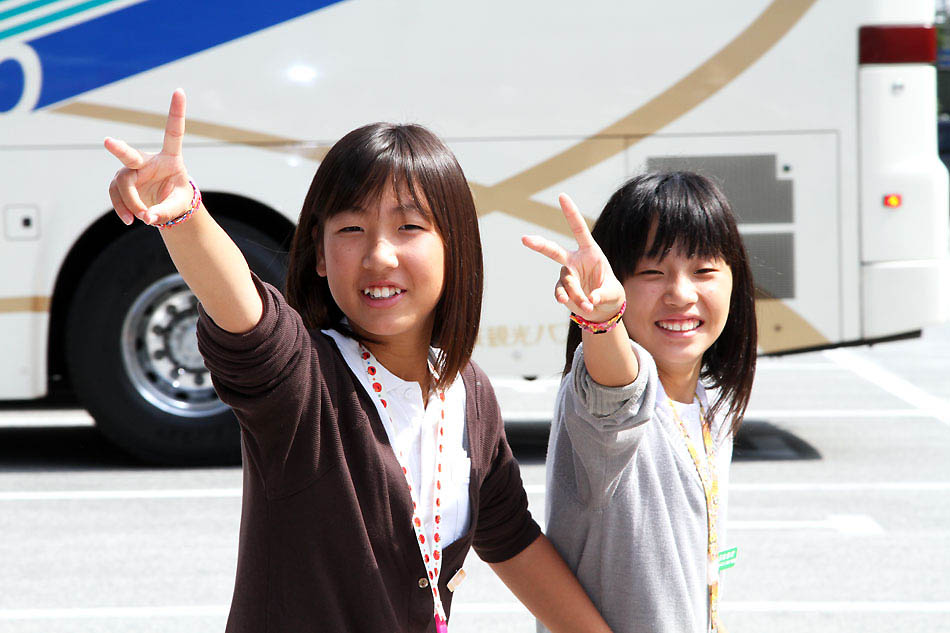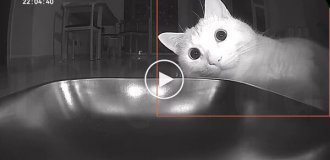Japanese schoolchildren (21 photos)
Today we have Japanese schoolchildren and schoolgirls... Cheerful guys, by the way...

Source: Zhzhurnal/vobche

1. I will tell you, and you look at the pictures... School in Japan is divided into 3 levels: elementary school (grades 1-6), middle school (grades 7-9), high school (grades 10-12)... Education in the first two is free and compulsory, but high school already costs money... Japanese mothers, as a rule, are very attentive to the success of their children. They maintain close contact with teachers, participate in the life of the school, and in case of illness of children, sometimes even go to lessons instead of them and take notes on lectures...

2. The school year in Japan begins on April 6, during cherry blossom time. The first trimester lasts until July 20, then the big summer holidays begin, the second trimester begins on September 1, the winter holidays start from December 26, and the last, third, trimester lasts from January 7 to March 25. Then there is a short spring break, during which there is a transition from class to class.

3. Education in Japan lasts six days, but every second Saturday is considered a day off... They begin to study at school when they reach six years of age. Before this, children usually go to kindergarten. By the time they enter school, children should have basic arithmetic and be able to read hiragana and katakana.

4. In elementary school, children study Japanese, mathematics, science (physics, chemistry, biology), social studies (ethics, history, etiquette), music, fine arts, physical education and home economics. By the end of primary school, children must, in particular, learn 1006 kanji characters from the 1945 characters on the state list... In secondary school, English and several special elective subjects are added to the list of subjects. The composition of these subjects depends on the school...

5. The most difficult subjects are considered to be mathematics and languages - Japanese (learning kanji) and English. The high school curriculum is slightly more varied than the middle and primary school curriculum, but students are given more opportunities to specialize in a particular area of study.

6. The duration of lessons in elementary school is 45 minutes, in middle and high schools - 50 minutes. Between lessons there are small breaks of 5-10 minutes, after the fourth lesson (at about half past one) there is usually a long break for lunch - about 60 minutes. Students who try to start eating breakfasts brought from home before the official start of lunch are punished, especially if they eat during lessons. In elementary school there are rarely more than four lessons a day. In high school their number can reach up to six.

7. In elementary school there is no homework, but in middle and high school homework is very large, therefore, despite the presence of days off, older Japanese schoolchildren are the busiest people in the country...

8. Unlike Russian schools, in Japan each class is assigned its own classroom, so it is not the students, but the teachers who go from classroom to classroom between lessons. The office assigned to the class is signed with the appropriate sign...

9. Often in Japanese schools there are no cafeterias or locker rooms, so students have to eat lunch and hang their clothes in the classrooms... At the end of lessons, the students themselves completely clean the school and school grounds. There are no cleaners in Japanese schools...

10. School uniforms are mandatory for most middle and high schools. Each school has its own, but in reality there are not many options. Usually this is a white shirt and dark jacket and trousers for boys and a white shirt and dark jacket and skirt for girls, or sailor fuku - “sailor suit”. Primary school students, as a rule, dress in ordinary children's clothes...

11. Joint field trips and excursions to ancient Japanese cities and temples are often organized for schoolchildren. Such excursions usually last up to three to four days...

12. The main problem of Japanese schools is the exhausting exams, each of which takes several hours of hard work and much more time in the process of preparing for it. From time to time they become the cause of schoolchildren's suicides...
[img]https://
cn1.nevsedoma.com.ua/images/2011/70/4/91200000.jpg[/img]
13. Middle and high school students take exams at the end of each term and in the middle of the first and second terms. There are no exams in primary school. Mid-term exams are held in Japanese, mathematics, English, science and social studies. At the end of trimesters, exams are held in all subjects studied...

14. A week before the start of exams, club meetings are canceled so that students can prepare for the exams. Examinations usually take the form of written tests. Exams are graded using a percentage system. The highest score is 100 points...

15. The transition from middle school to high school is carried out based on exam results. First, based on his school performance, the student receives a list of high schools to which he has a chance of admission. Then he takes a transition exam, and based on his results and previous performance, the question of which high school the student will enter is decided...

16. Good students end up in prestigious high schools, bad students end up in run-down schools for those who do not intend to receive a higher education. Such schools focus on home economics, agriculture, and so on. Their graduates have no career prospects...

17. Those who do not want to enroll in high school can enroll in five-year “technical colleges” - vocational schools. However, entering them is not so easy - there is a lot of competition for the best of them, since skilled workers are highly valued in Japan. Some technical colleges are owned by large companies, and their graduates immediately find work...

18. In short, Japanese schoolchildren have a difficult life, although you can’t tell from some of their facial expressions...

19.

20. And Japanese schoolchildren are not afraid to get dirty, because everywhere is clean...

21. By the way, here for the first time in my life I was photographed by three people at once...





















